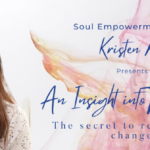Kinesiology for Post Traumatic Stress Disorder (PTSD)
Kinesiology is effective in the treatment of PTSD, and when combined with counselling and dreamwork during the session it is a powerful tool to help individuals resolve the stress associated with past trauma, resolve the occurrence of flashbacks and nightmares and gain the confidence they need to move forward.
What is PTSD?
Post-traumatic stress disorder (PTSD) is a particular set of reactions that can develop in people who have been through a traumatic event which may have threatened their life or safety, or resulted in the loss of or endangered the lives of others around them. PTSD could arise due to a severe accident, assault, torture, or environmental disaster. As a result, the person experiences feelings of intense fear or helplessness.
Signs of PTSD
People with PTSD often experience feelings of panic, anxiety or fear, similar to what was felt during the event. A person with PTSD experiences four main types of difficulties.
- Re-living the event – A person experiencing PTSD may experience unwanted and recurring memories, these may occur as vivid images (flashbacks) and/or nightmares.
- Physical reactions – There may be intense emotional or physical reactions when reminded of the event, these may include sweating, heart palpitations, anxiety or panic.
- Being on high alert – The person may find themselves continually on the lookout for signs of danger. Hypervigilance may cause sleeping difficulties, irritability and lack of concentration, easily becoming startled.
- Avoidance – The person deliberately avoids activities, places, people, thoughts or feelings associated with the event because they bring back painful memories.
- Emotional numbness – The person loses interest in life and may feel cut off and detached from others, or may find themselves feeling emotionally flat and numb.
Additional problems, such as depression, anxiety, and the use of addictive substances, are more likely to occur if PTSD has persisted for a long time.
Symptoms of PTSD
If you have experienced a traumatic event that has led to
- upsetting memories, flashbacks or dreams of the event?
- feeling physically and psychologically distressed when something reminds you of the event
You may find that you have you also experienced some of the following symptoms:
- trouble remembering essential parts of the event
- negative beliefs about yourself, others or the world
- blamed yourself or others for what happened
- feeling upset, angry, guilty or ashamed
- loss of interest in activities and hobbies
- feeling cut off from others
- trouble feeling positive emotions
- difficulty sleeping
- vivid dreams or nightmares
- felt easily angered or irritated
- engaged in reckless or self-destructive behaviour
- difficulty concentrating
- feeling on guard or vigilant
- easily startled
If all these symptoms have been occurring for a month or more, you may be experiencing post-traumatic stress disorder.
How Kinesiology and Dreamwork can be used to resolve PTSD.
Kinesiology combined with Dreamwork can be used to identify and reduce stress on a subconscious level. In the case of PTSD, kinesiology and dreamwork can be used to access the traumatic emotions that accompany the event and that are triggered during day to day life. By working with TCM acupoints to stimulate the amygdala (the survival centre of the brain), kinesiology gives us a unique way to shift these traumatic memories.
Dreamwork gives us a way to consciously work through the unprocessed emotions that the psyche tries to work through in the form of nightmares.
I use kinesiology in combination with Counselling, Dreamwork, Chinese medicine and the chakra system to balance energy centres using vibrational frequencies such as sound and flower essences.
Suggested treatment plan.
Kinesiology and dreamwork can be complementary to many other forms of treatment for PTSD. When treating PTSD with the help of kinesiology I recommend:
- An initial 90-minute kinesiology consultation followed by 3 – 5 standard consultations 1 -2 weeks apart.
- Further follow-up standard consultations should be spaced between 2 -4 weeks apart or booked as needed.
If you want to find out more about PTSD, please visit Beyond Blue to download their fact sheet.
Kristen Ross founded Affinity Wellness in 2007 and since has helped hundreds of clients to unlock their Inner Guidance, Unleash their potential and create lives they love.
With a history in the management of artists. Kristen had the opportunity to help guide the careers of many professional actors and artists, helping others thrive personally and professionally by connecting to their intuition and inner compass, this led her to study healing modalities such as kinesiology and counselling to enhance her work as a soul empowerment guide.
Kristen combines a striking combination of energy healing (kinesiology), counselling, coaching, dreamwork, meditation and yogic medicine practices to tap into the many facets of the self, mind, body and soul and release the layers that block her clients from accessing their intuition and self-love.
She believes that your life is your spiritual practice and that every decision you make is a part of your journey towards peace, power and enlightenment.
Everything you create and achieve comes from your ability to love and accept yourself and to do that you must engage in inner work.
Kristen currently runs a private online practice servicing individuals across Australia, New Zealand and the UK based in Melbourne, Australia.













